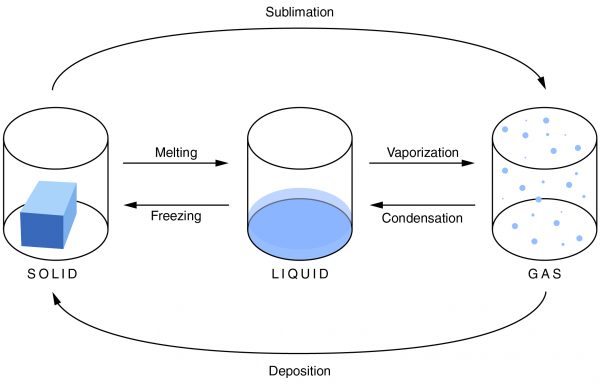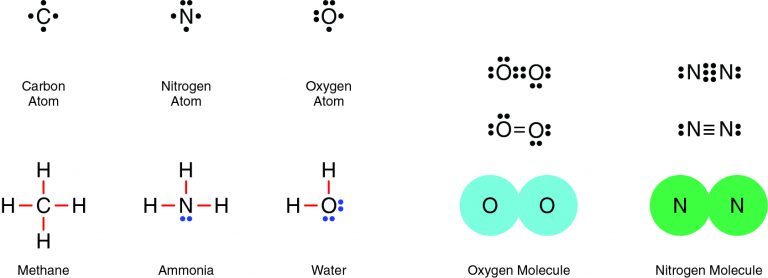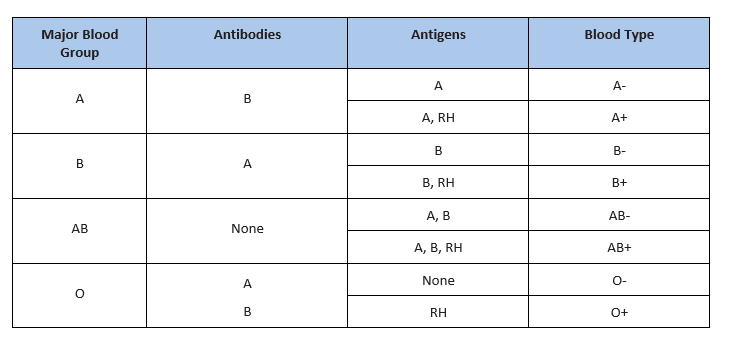An intracellular chemical signal can be produced in the cell membrane. Once it is produced, where does it go?
A. To a different cell
B. To another part of the same cell
C. To a region right outside the cell
D. To an area with a high ion concentration
There are two major types of receptor molecules that respond to an intercellular chemical signal:
- Intracellular receptors: These receptors are located in either the cytoplasm or the nucleus of the cell. Signals diffuse across the cell membrane and bind to the receptor sites on intracellular receptors, of the same cell.
- Membrane-bound receptors: These receptors extend across the cell membrane, with their receptor sites on the outer surface of the cell membrane. They respond to intercellular chemical signals that are large, water-soluble molecules that do not diffuse across the cell membrane.
Therefore, the Correct Answer is B.
More Questions on TEAS 7 Science
-
Q #1: What body system is the skeletal system most closely associated with when hematopoiesis happens?
A. Urinary system
B. Digestive system
C. Muscular system
D. Cardiovascular system
Answer Explanation
The cardiovascular system is closely associated with hematopoiesis because it includes the heart and blood vessels, which are responsible for circulating blood throughout the body. Hematopoiesis, the process of blood cell formation, primarily occurs in the bone marrow, which is part of the skeletal system. However, the cardiovascular system plays a crucial role in transporting these blood cells to various parts of the body once they are produced in the bone marrow.
So, while the skeletal system provides the site for hematopoiesis, the cardiovascular system is responsible for distributing the blood cells, making it the most closely associated system in this context.
-
Q #2: _____ is dependent not only on the temperature, but also on the amount of substance available.
A. Condensation
B. Deposition
C. Evaporation
D. Melting
Answer Explanation
Unlike condensation, deposition, and melting, evaporation is dependent not only on the temperature, but also on the amount of a substance available.

Condensation is the change of a gas or vapor to a liquid. A change in the pressure and the temperature of a substance causes this change. The condensation point is the same as the boiling point of a substance. It is most noticeable when there is a large temperature difference between an object and the atmosphere. Condensation is also the opposite of evaporation.
Evaporation is the change of a liquid to a gas on the surface of a substance. This is not to be confused with boiling, which is a phase transition of an entire substance from a liquid to a gas. The evaporation point is the same as the freezing point of a substance. As the temperature increases, the rate of evaporation also increases. Evaporation depends not only on the temperature, but also on the amount of substance available.
Freezing is the change of a liquid to a solid. It occurs when the temperature drops below the freezing point. The amount of heat that has been removed from the substance allows the particles of the substance to draw closer together, and the material changes from a liquid to a solid. It is the opposite of melting.
Melting is the change of a solid into a liquid. For melting to occur, enough heat must be added to the substance. When this is done, the molecules move around more, and the particles are unable to hold together as tightly as they can in a solid. They break apart, and the solid becomes a liquid.
Sublimation is a solid changing into a gas. As a material sublimates, it does not pass through the liquid state. An example of sublimation is carbon dioxide, a gas, changing into dry ice, a solid. It is the reverse of deposition.
Deposition is a gas changing into a solid without going through the liquid phase. It is an uncommon phase change. An example is when it is extremely cold outside and the cold air comes in contact with a window. Ice will form on the window without going through the liquid state.
-
Q #3: Mendel discovered the pattern associated with _____after developing a series of rules in genetics.
A. epigenetics
B. heredity
C. heterogeneity
D. taxonomy
Answer Explanation
Mendel was accurately able to predict the patterns of heredity by studying rules related to genetics. These rules helped shape his theory of heredity. Heredity is the characteristics offspring inherit from their parents.
From experiments with garden peas, Mendel developed a simple set of rules that accurately predicted patterns of heredity. He discovered that plants either self-pollinate or cross-pollinate, when the pollen from one plant fertilizes the pistil of another plant. He also discovered that traits are either dominant or recessive. Dominant traits are expressed, and recessive traits are hidden.
Mendel’s Theory of Heredity
To explain his results, Mendel proposed a theory that has become the foundation of the science of genetics. The theory has five elements:
- Parents do not transmit traits directly to their offspring. Rather, they pass on units of information called genes.
- For each trait, an individual has two factors: one from each parent. If the two factors have the same information, the individual is homozygous for that trait. If the two factors are different, the individual is heterozygous for that trait. Each copy of a factor, or gene, is called an allele.
- The alleles determine the physical appearance, or phenotype. The set of alleles an individual has is its genotype.
- An individual receives one allele from each parent.
- The presence of an allele does not guarantee that the trait will be expressed.
-
Q #4: What type of bond forms between nitrogen and oxygen, and why?
A. Ionic, because electrons are shared
B. Covalent, because electrons are shared
C. Ionic, because electrons are transferred
D. Covalent, because electrons are transferred
Answer Explanation
Nitrogen and oxygen are both nonmetals, which means they will share electrons in a covalent bond. For example, two oxygen atoms form a double bond, in which two pairs of electrons (four electrons total) are shared. Similarly, two nitrogen atoms form a molecule with a triple bond, in which three pairs of electrons (six electrons total) are shared.

-
Q #5: What structure plays a role in air conduction?
A. Alveolus
B. Capillary
C. Lung
D. Trachea
Answer Explanation
The primary function of the respiratory system is to provide oxygen to and remove carbon dioxide from the body. In addition to gas exchange, the respiratory system enables a person to breathe. Breathing, or inhalation, is essential to life. It is the mechanism that provides oxygen to the body. Without oxygen, cells are unable to perform their functions necessary to keep the body alive. The primary muscle of inspiration is the diaphragm. Known as the chest cavity, this dome shaped structure flattens when it contracts. The rib cage moves outward, allowing outside air to be drawn into the lungs. During relaxation, the diaphragm returns to its dome shape and the rib cage moves back to its natural position. This causes the chest cavity to push air out of the lungs.
The respiratory system can be functionally divided into two parts:
- Air-conducting portion: Air is delivered to the lungs. This region consists of the upper and lower respiratory tract—specifically, the larynx, trachea, bronchi, and bronchioles.
- Gas exchange portion: Gas exchange takes place between the air and the blood. This portion includes the lungs, alveoli, and capillaries.
-
Q #6: Which statement best represents Mendel’s experiments with garden peas?
A. As a result, Mendel developed several theories that have since been disproved.
B. Mendel realized he was on an incorrect track, which led him to other experimental media
C. As a result, Mendel developed foundational conclusions that are still valued and followed today.
D. Mendel collaborated with others interested in genetics to develop heredity guidelines we still use today
Answer Explanation
Mendel developed theories of genetics that scientists around the world use today.
From experiments with garden peas, Mendel developed a simple set of rules that accurately predicted patterns of heredity. He discovered that plants either self-pollinate or cross-pollinate, when the pollen from one plant fertilizes the pistil of another plant. He also discovered that traits are either dominant or recessive. Dominant traits are expressed, and recessive traits are hidden.
Mendel’s Theory of Heredity
To explain his results, Mendel proposed a theory that has become the foundation of the science of genetics. The theory has five elements:
- Parents do not transmit traits directly to their offspring. Rather, they pass on units of information called genes.
- For each trait, an individual has two factors: one from each parent. If the two factors have the same information, the individual is homozygous for that trait. If the two factors are different, the individual is heterozygous for that trait. Each copy of a factor, or gene, is called an allele.
- The alleles determine the physical appearance, or phenotype. The set of alleles an individual has is its genotype.
- An individual receives one allele from each parent.
- The presence of an allele does not guarantee that the trait will be expressed.
-
Q #7: Which blood group is a universal donor?
A. A
B. B
C. AB
D. O
Answer Explanation
A person can be a universal blood donor or acceptor. A universal blood donor has type O blood, while a universal blood acceptor has type AB blood.
There are several different types or groups of blood, and the major groups are A, B, AB, and O. Blood group is a way to classify blood according to inherited differences of red blood cell antigens found on the surface of a red blood cell. The type of antibody in blood also identifies a particular blood group. Antibodies are proteins found in the plasma. They function as part of the body’s natural defense to recognize foreign substances and alert the immune system.

Depending on which antigen is inherited, parental offspring will have one of the four major blood groups. Collectively, the following major blood groups comprise the ABO system:
- Blood group A: Displays type A antigens on the surface of a red blood cell and contains B antibodies in the plasma.
- Blood group B: Displays type B antigens on the red blood cell’s surface and contains A antibodies in the plasma.
- Blood group O: Does not display A or B antigens on the surface of a red blood cell. Both A and B antibodies are in the plasma.
- Blood group AB: Displays type A and B antigens on the red blood cell’s surface, but neither A nor B antibodies are in the plasma
In addition to antigens, the Rh factor protein may exist on a red blood cell’s surface. Because this protein can be either present (+) or absent (-), it increases the number of major blood groups from four to eight: A+, A-, B+, B-, O+, O-, AB+, and AB-.

-
Q #8: While hiking, a person is startled after encountering a bear. Her palms get sweaty and her heart starts racing. Which part of her nervous system was directly stimulated?
A. Central
B. Parasympathetic
C. Somatic
D. Sympathetic
Answer Explanation
The autonomic nervous system is responsible for activities that are nonvoluntary and under unconscious control. This system controls glands and the smooth muscles of internal organs, heart rate, breathing, and digestion. The autonomic nervous system is further divided into the following:
- Sympathetic nervous system: The sympathetic nervous system focuses on emergency situations by preparing the body for fight or flight. (Sympathetic = Stress)
- Parasympathetic nervous system: The parasympathetic nervous system controls involuntary processes unrelated to emergencies. This system deals with “rest or digest” activities. (Parasympathetic = Peace)
The somatic nervous system primarily controls voluntary activities such as walking and riding a bicycle. Thus, this system sends information to the CNS and motor nerve fibers that are attached to skeletal muscle.
-
Q #9: A person is diagnosed as having acidosis, a condition in which the blood pH is below 7.45. What does the doctor most likely conclude?
A. Too much carbon dioxide is found in the blood.
B. Highly oxygenated blood circulates through the body
C. A blockage prevents blood from leaving the pulmonary artery
D. The nasal cavity has a difficult time clearing particles from the air.
Answer Explanation
Acidosis is when the body fluids contain too much acid, or low pH. The kidneys and lungs are unable to keep the body’s pH in balance. Acidosis is the result when there is too much loss of bicarbonate from the blood known as metabolic acidosis, or due to a buildup of carbon dioxide in the blood due to poor lung function, known as respiratory acidosis. It is the opposite of alkalosis, which is a condition in which there is too much base in the body fluids.
-
Q #10: Which example is part of the scientific method?
A. A student reads about a new way to harness energy from the sun.
B. A researcher studies the effects of car exhaust on how people breathe.
C. A researcher analyzes how many plants respond well to a new fertilizer
D. A student discovers how insulin plays a role in the development of diabetes
Answer Explanation
One step of the scientific method is to analyze information or data collected from the experiment to conclude whether the hypothesis is supported.
Recall that these make up the scientific method, described below:
- Problem: The question created because of an observation. Example: Does the size of a plastic object affect how fast it naturally degrades in a lake?
- Research: Reliable information available about what is observed. Example: Learn how plastics are made and understand the properties of a lake.
- Hypothesis: A predicted solution to the question or problem. Example: If the plastic material is small, then it will degrade faster than a large particle.
- Experiment: A series of tests used to evaluate the hypothesis. Experiments consist of an independent variable that the researcher modifies and a dependent variable that changes due to the independent variable. They also include a control group used as a standard to make comparisons.
- Example: Collect plastic particles both onshore and offshore of the lake over time. Determine the size of the particles and describe the lake conditions during this time period.
- Observe: Analyze data collected during an experiment to observe patterns.
- Example: Analyze the differences between the numbers of particles collected in terms of size.
- Conclusion: State whether the hypothesis is rejected or accepted and summarize all results.
- Communicate: Report findings so others can replicate and verify the results.
Free Access on TEAS 7 Exams and Study Notes
- Access to all TEAS 7 Exams
- Performance Tracking and Analysis
- Well Documented and Explained Questions and Answers
- 2000+ Questions and Correct Answers: Answers Well Explained
- Libary of Detailed StudyNotes
- Topical Questions and Answers on Examinable topics
TEAS 7 Exams (Q&A)
TEAS 7 Study Notes
TEAS 7 Topical Tests

TEAS 7 Study Guides
Quick Links
Refer a Friend
Refer a friend and claim free unlimited access

© 2024 ExamGates Made with by ExamGates
